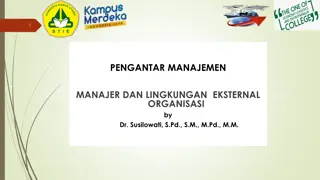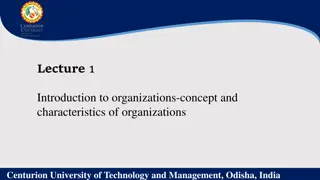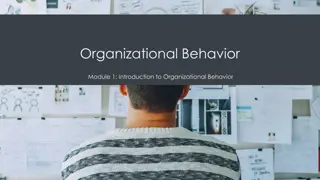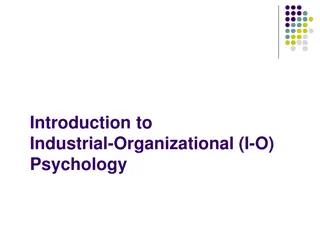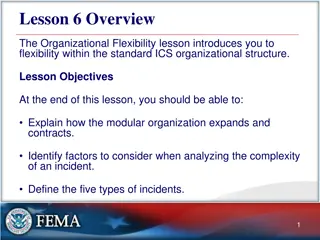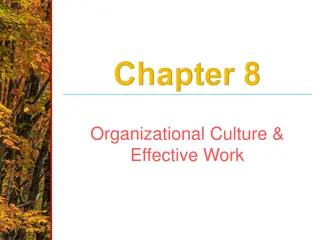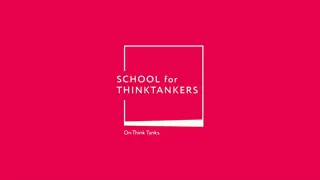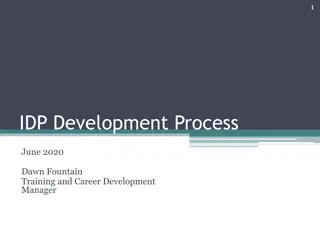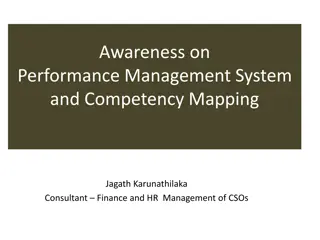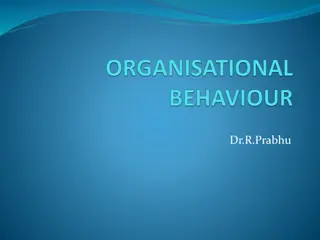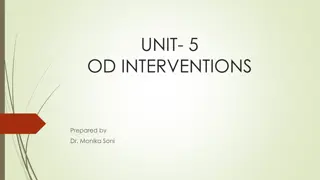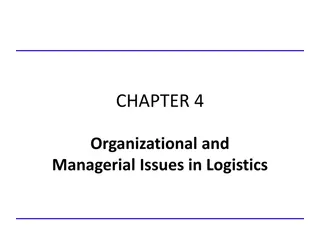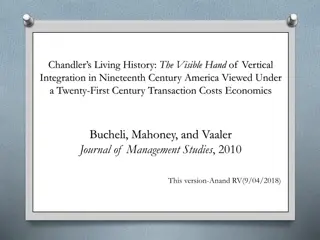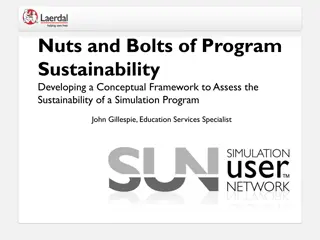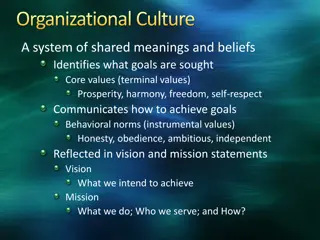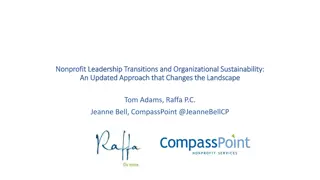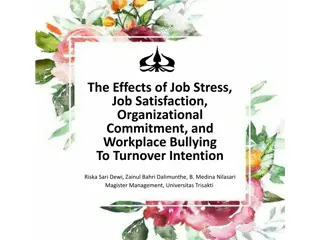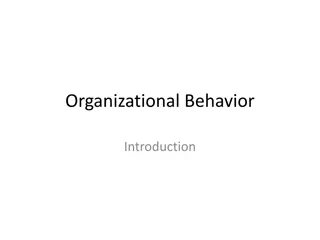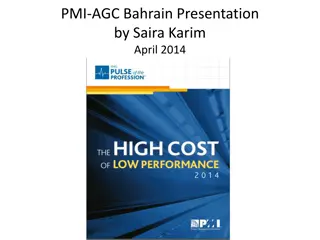Organizational Development: Key Concepts and Practices
Explore the world of Organizational Development (OD) through this comprehensive guide covering what OD entails, its significance in practice, the relationship between Human Resource Development (HRD) and OD, roles of OD practitioners, and essential frameworks and processes involved. Gain insights into how OD interventions, alignments, strategies, and processes contribute to effective organizational change and development.
Download Presentation

Please find below an Image/Link to download the presentation.
The content on the website is provided AS IS for your information and personal use only. It may not be sold, licensed, or shared on other websites without obtaining consent from the author.If you encounter any issues during the download, it is possible that the publisher has removed the file from their server.
You are allowed to download the files provided on this website for personal or commercial use, subject to the condition that they are used lawfully. All files are the property of their respective owners.
The content on the website is provided AS IS for your information and personal use only. It may not be sold, licensed, or shared on other websites without obtaining consent from the author.
E N D
Presentation Transcript
An organization No matter how well Only as good as the people in it organization well designed people who live and work designed
OVERVIEW 1. What is Organizational Development (OD) 2. OD in Practice 3. Relationship between HRD and OD 4. OD Practitioner
1. WHAT IS ORGANIZATIONAL DEVELOPMENT (OD)
HR PROFESSIONALS Be HR Specialist And Specialist Practitioner And OD Practition er
OVERVI EW ST SYSTEMS STRATEGY STRUCTURE SYSTEMS STRATEGY RUCTURE STAFF SK STYLE STAFF SKILLS STYLE ILLS H HR RD D
OD Effective diagnostic Strategic and operational interventions Lead to change Long Problem diagnostic and and development interventions development t ool change range effect solving and renewal Long- -range Problem solving renewal processes processes
OD How How How groups and organizations function How people interact function interact to accomplish work
ORGANIZATIONAL INTERVENTIONS Implement strategic and Stem from diagnosed Align strategic and operational diagnosed needs Align organizational elements with strategy operational changes needs changes
ORGANIZATIONAL ALIGNMENTS
OD PROCESS Top involvement Bottom Top management s management s commitment, support, and Bottom- -up up approach approach - inputs from employees
OD STRATEGY MAP Relations 1. People 2. Process 3. Customer 4. Stakeholders Relations between key strategic strategic perspectives perspectives
OD DRIVING FORCES Organizational clarity and aligned with defined Efficiency strategy Growth adaptability clarity - strategic defined goals strategy - maintaining productivity Growth strategy - maintaining organizational adaptability and longevity strategic direction goals productivity direction clear longevity
OD DRIVING FORCES Values system Supportiv Higher levels of development accomplishment Values system based on optimistic Supportive environment development and accomplishment optimistic view and
OD Planned Effects Entire Organization Requires Support Improve Organizational Health Deliberate Interventions Planned Activity Entire Organization Support from All Levels Organizational Effectiveness Health Interventions Effectiveness and
KEY CHARACTERISTICS OF OD Need/Problem - Turnover, Response to Need/Problem Absenteeism, Low Job Satisfaction Views Organization System - Interdependence Involves Extensive Planning Resistance Interdependence Extensive Planning - Deal with Resistance, Systematic Diagnosis Diagnosis, Change Change Plan
CORE BUSINESS OF OD Capability maintained, aligned Health maintained maintained, aligned and maintained or developed and improved improved developed
Be Beha hav viora l l iora OD OD Approaches Approaches Te Tec ch hn nic al al ic Str Stru uc ctur al al tur
BEHAVIORAL APPROACH Better utilization Improving Morale, Motivation utilization of Human Resources Morale, Motivation & Commitment Commitment
STRUCTURAL APPROACH Relate Downsizing Decentralization Centralization Relate elements of Organization to one another Downsizing Decentralization Centralization
TECHNICAL APPROACH Changes in Machinery, Job Change to be more Productive Machinery, Methods, Automation, Methods, Automation, Job Design Design Productive
OD INTERVENTION Not merely change in way things done Change in behaviour way things done attitude behaviour AND attitude
OD INTERVENTION Reflect Working Reflect and Respond Working across Respond across different departments
OD INTERVENTIONS Mission and Vision Statement Analysis Strategic Planning Reward and Recognition Change Management Leadership Team Building Facilitation
3. RELATIONSHIP BETWEEN OD AND HRD
OD Involve groups engagement, ownership HR groups of people to maximise engagement, ownership and contribution HR skill maximise contribution
HR SKILLS Collecting, analysing Acting Provide insight Collecting, analysing data Acting on data and information insight across business
OD Managed from board Reach across all areas of board level all areas of business level business
DELIVERING OD Many HR take lead Multi-disciplinary approach HR and OD work together to develop long term strategic view OD activities supported and underpinned by people management Many ways ways people management practice practice
HR PROFESSIONALS Business partner Guide behaviours Reinforce values partner behaviours values
OD Develop HR s Organisational change Organisational culture Employee engagement HR s strategic change culture engagement strategic role role
OD Do not replace Draw on HR replace HR HR processes processes
OD People and People People and problem People data problem- -centred data to diagnose issues centred activity
OD PRACTITIONER Bringing whole Build reputation as trusted Advocate Continuously improving learning and understanding of practice whole self self to task in hand trusted advisor advisor Advocate of development improving and developing developing own
KEY COMPETENCIES Theoretical and Technical expertise Influencing Energise engagement Innovative, Creative and Critical thinking expertise Influencing Skills engagement thinking
KEY COMPETENCIES Tackle difficulties and problems with positivity Self Credible communicators Interpersonal positivity Self- -Confident Confident communicators Interpersonal and and Facilitation Facilitation skills
KEY COMPETENCIES Emotionally Ethical, Acts with integrity Emotionally Tuned in Ethical, value integrity value driven
OD PRACTITION ER S PERFORMAN CE: 3 CS
OD PRACTITIONER Strong grasp of strategic Estimation of human capital Align strategy Challenge assumptions strategic planning human capital and values of organization assumptions planning and social capital social capital Align strategy within values
CORE VALUES HUMANISTIC Function as human resources Develop to full Increase effectiveness human beings beings rather than resources full potential effectiveness of organizational goals potential


